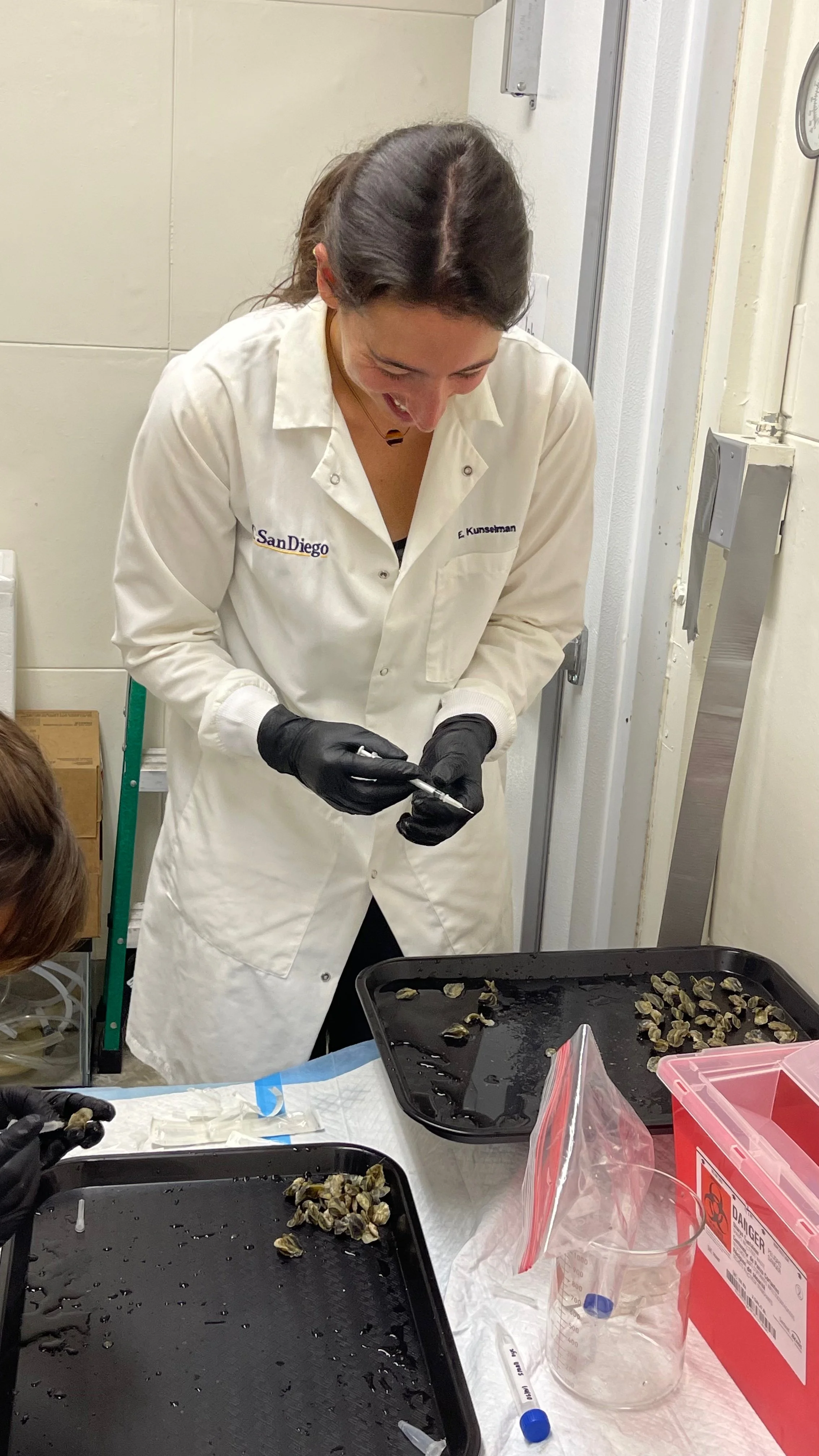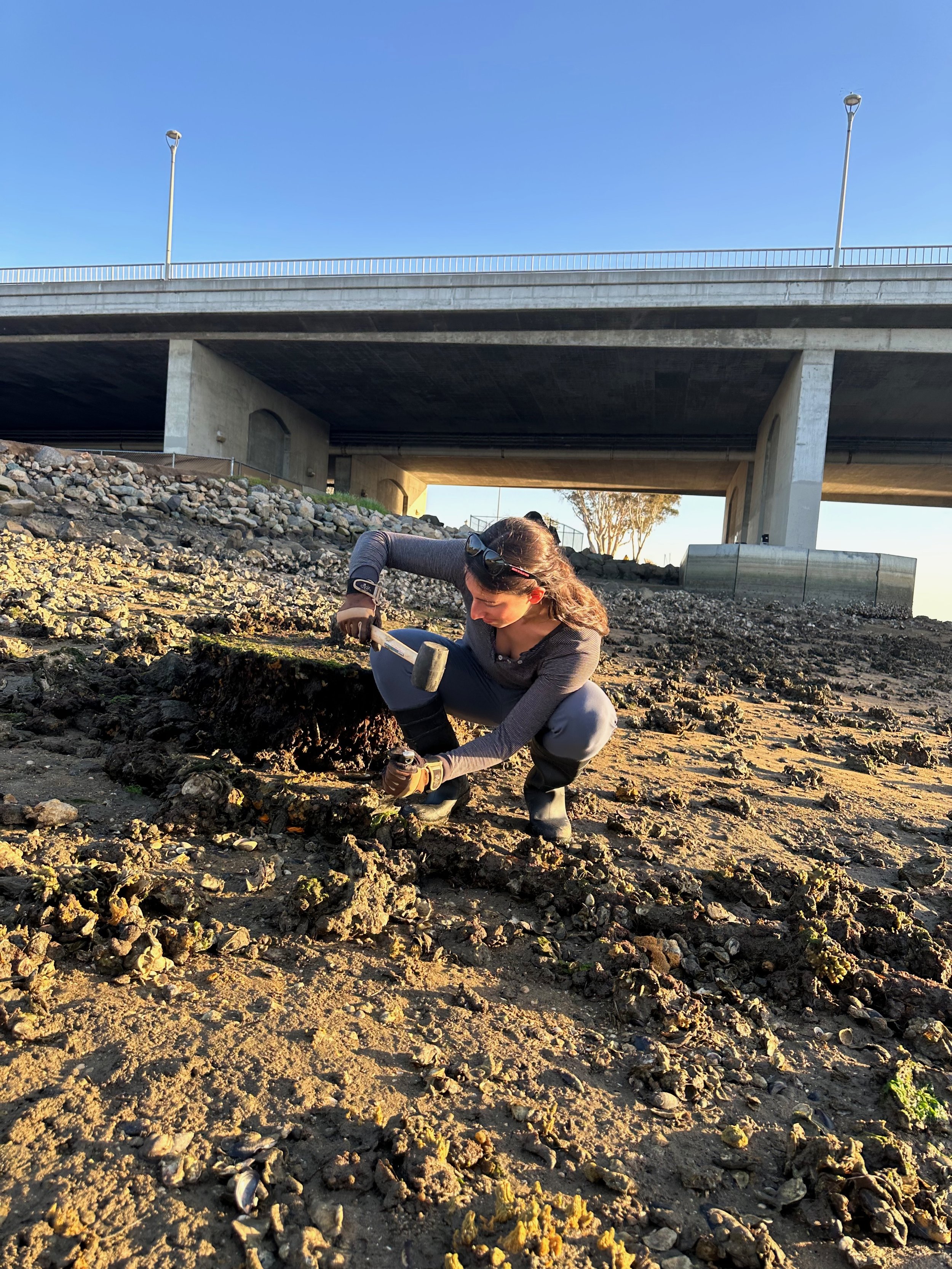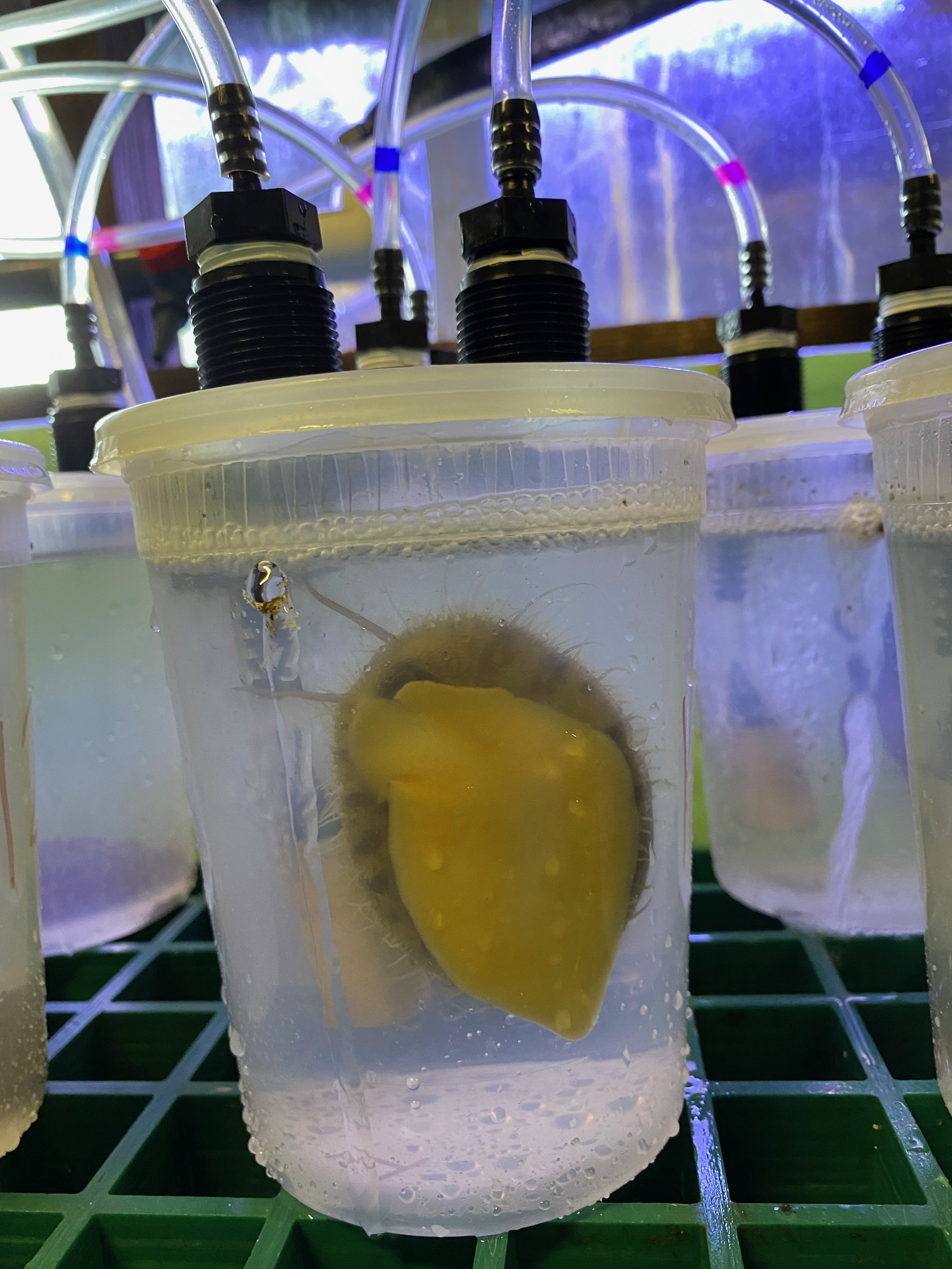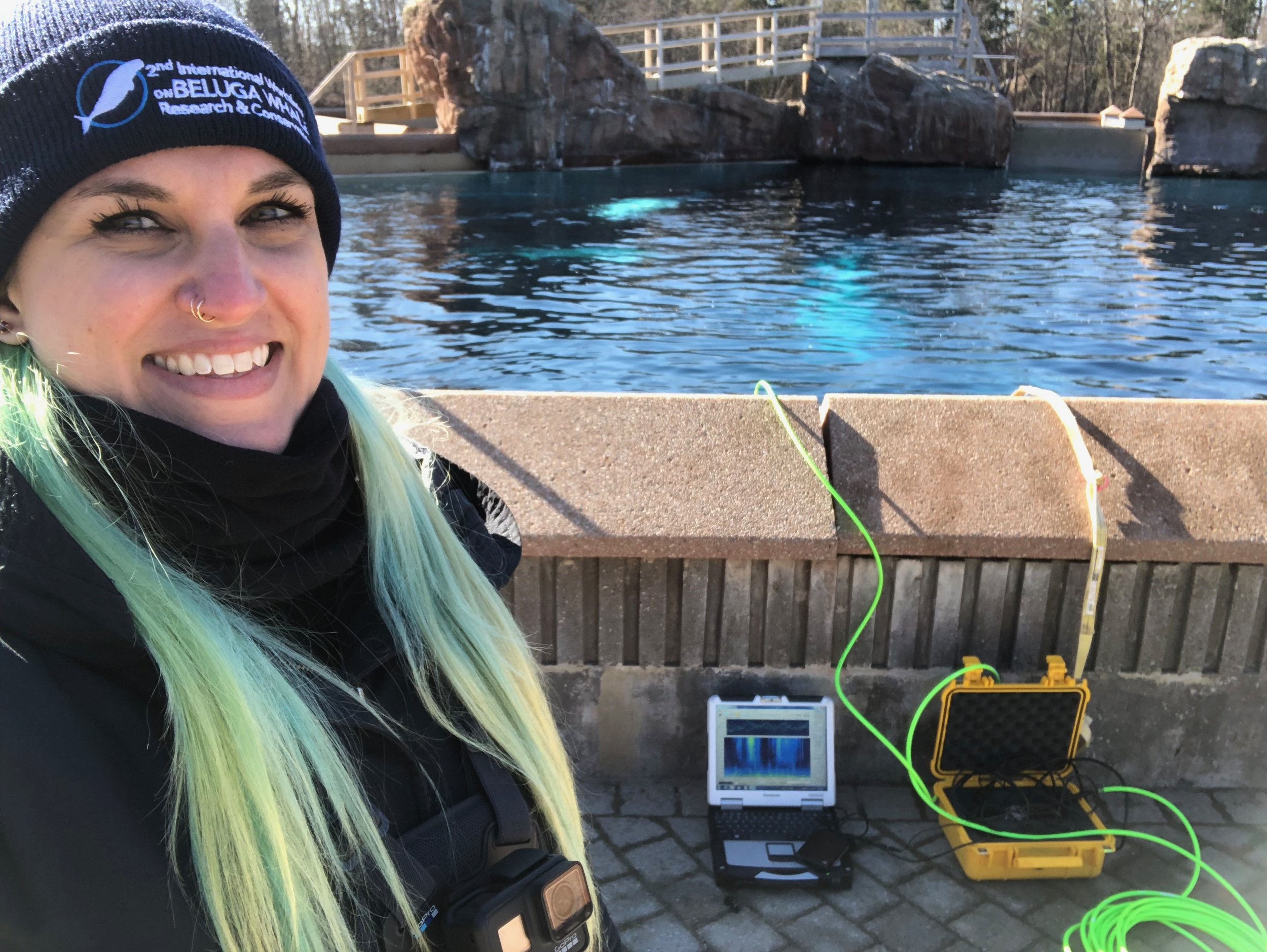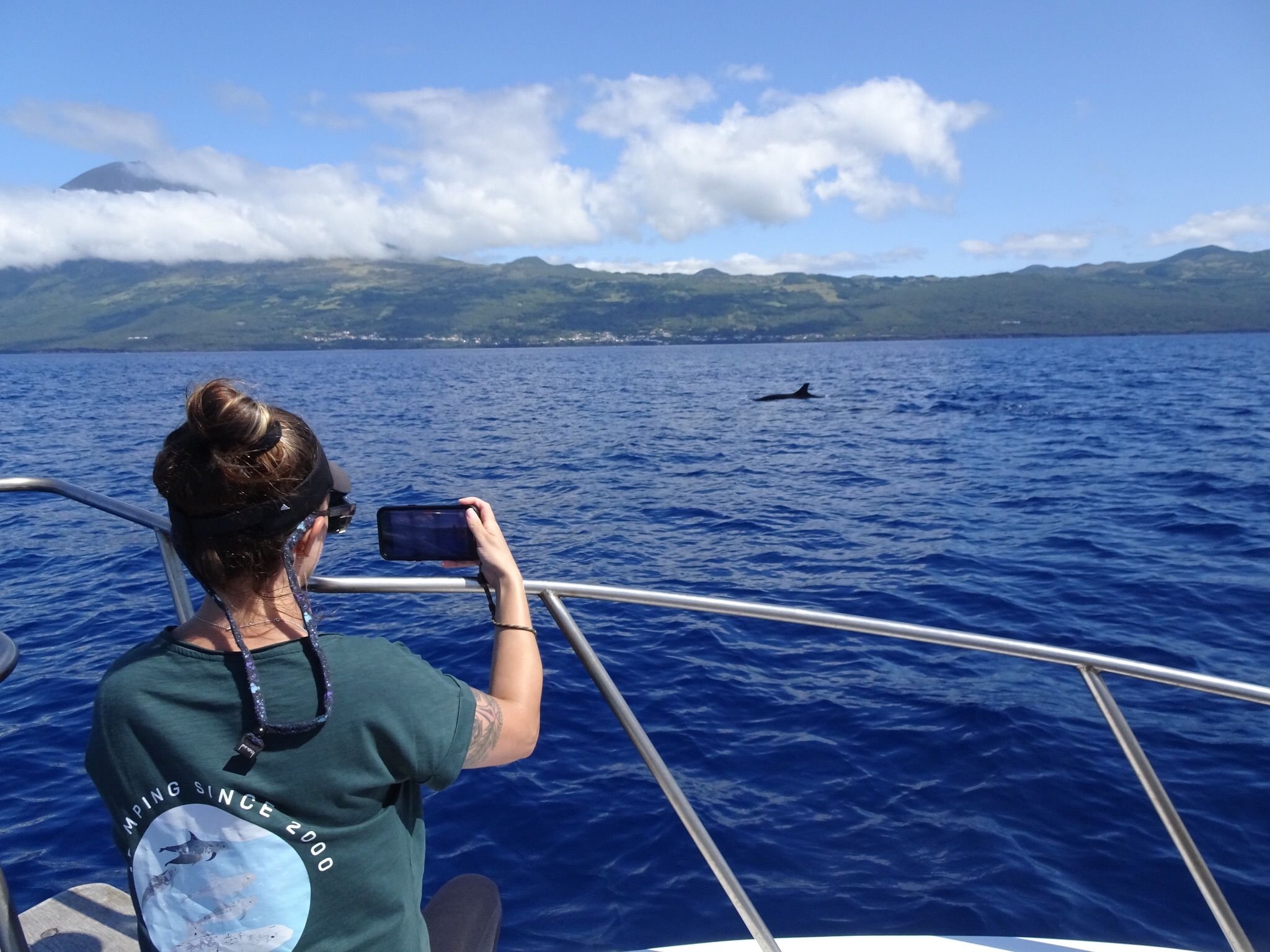A Plunge into the Postdoctoral World!
In honor of National Postdoctoral Appreciation, we present this special blog post, highlighting the career paths and research of two postdoctoral associates at the Hubbs-Seaworld Research Institute!
Dr. Emily Kunselman
My name is Emily and I just received my doctoral degree in Marine Biology from Scripps Institution of Oceanography in May of 2024. I started my new postdoctoral position at the Hubbs-SeaWorld Research Institute and am thrilled to be working for a nonprofit on sustainable seafood.
The sudden urge to become a marine biologist hit me when I was just a middle school student in Michigan. My first exposure to the ocean was off the coast of Florida in those early middle school years. My entire class in middle school took one of those career tests and that is how I learned that Marine Biologist was a possible career. From that moment forward, everything I learned only reinforced my desire to study marine biology and I applied to colleges with that in mind. I didn’t actually know how to get a job as a marine biologist or what graduate school really looked like, but UC San Diego won me over by their proximity to the ocean and this apparently famous oceanographic institution just down the hill.
My undergraduate program finally gave me a look at what marine biologists really do. I got to spend two summers in Seattle interning with the Department of Natural Resources on a project involving native oysters and eelgrass beds. Then, I started working with a PhD student in a lab at Scripps who studied the microbiome of fish. Henceforth, my research niche was forged – studying the microbiome of oysters.
This topic brought me to new heights, well rather new tide heights. Oysters were a perfect study subject because you could walk out onto the tidal flat during low tide and collect them. Plus, they didn’t move. Studying oysters and the microbiome launched me into some incredibly interesting projects. I investigated the microbiota that colonized Olympia oysters in the Puget Sound, the impact of abalone withering syndrome disease on the white abalone microbiome, and the impact of temperature on the ostreid herpesvirus in Pacific oysters and their microbiome. These projects gave me the roots I needed to initiate my career in aquaculture.
Aquaculture was actually something that I learned about in an undergraduate marine biology class. I saw it as a clear solution to declining wild fisheries. I was further inspired by the sustainability of growing mollusks for food because they have a net benefit on their surrounding environment. I decided I would do everything in my power to advance and improve aquaculture in Southern California.
This brings me to where I am today. I am three weeks into my new role as a postdoctoral research associate at Hubbs-SeaWorld Research Institute (HSWRI) and already laying plans to study probiotics in fish aquaculture, tackle early disease detection, and assess disease resistance in local oyster populations. I couldn’t be happier with where I ended up after my PhD. The team here at HSWRI is driven to conduct the necessary research for sustainable aquaculture to succeed and is actively growing a large variety of marine aquaculture species already. I owe much of my success to the countless mentors I have had, starting with my parents and continuing with PhD students, faculty, and industry partners whom I have met all over the world.
Dr. Audra Ames
Dr. Audra Ames is a bioacoustician studying the communication and echolocation systems of toothed whales. In particular, she is most curious about the communication sounds of belugas and narwhals, two closely related toothed whale species. Dr. Ames knew from a very young age that she wanted to work with marine mammals, having been inspired by the killer whales at Sea World Orlando as a young child, but never in her wildest dreams would she have imagined she would be able to study the calls of narwhal calves!
Dr. Ames was a graduate student of the Marine Mammal Behavior and Cognition Lab at the University of Southern Mississippi where she first heard and fell in love with bottlenose dolphin whistles. She completed her MA study on signature whistle development of a bottlenose dolphin calf in response to production of signature whistles from the calf's social group surrounding the calf's birth. From there, she pivoted her career to focus on signature-type signals in toothed whales. She was recruited to study beluga vocal development at Oceanogràfic in Valencia, Spain as her PhD thesis following completion of her MA thesis in 2016. The beluga vocal repertoire became Dr. Ames' primary focus until the completion of her PhD in 2019.
Dr. Ames has always been fascinated by narwhals, so shortly after completing her PhD, she started applying her knowledge of beluga vocalizations to the species’ more elusive cousin! In 2021, she published a paper alongside her colleagues of the Greenland Institute of Natural Resources and Greeneridge Sciences, Inc. documenting the first record of narwhal mother-calf communication, based on Dr. Ames’s experience with beluga calves.
She remained as a researcher at Oceanogràfic (Spain) until December 2023, when she joined the team at Hubbs SeaWorld Research Institute as a postdoctoral research associate with the Animal Behavior and Senses Lab at Hubbs SeaWorld Research Institute (San Diego, CA). Currently, her studies are focused on vocal learning in belugas, the impacts of human-made noise on signature signals, and identifying the calls narwhals use to maintain contact with social group members to see if they can be used for monitoring purposes.


